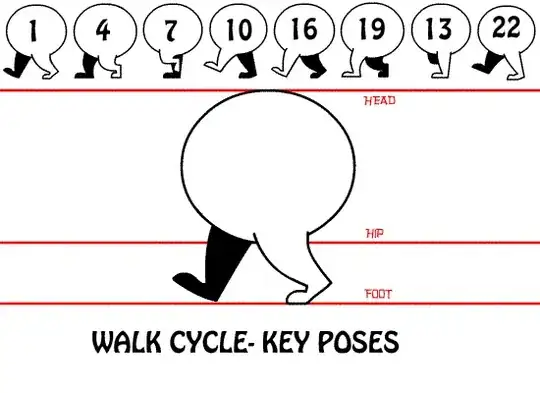The walk cycle is considered to be one of the most basic aspects of animation.
American animators and animation enthusiasts often times scorn the Japanese styles and methods of animation as lazy, while Japanese anime enthusiasts deride the American style as clunky or too comical.
Why is that you ask? The answer lies in how these countries distribute their budget and time.
While American animation often times may seem lacking in it's attention to detail, it makes up for it the quality of their animation. American animation often times meticulous and original in how they animate motion, though sometimes content is reused cyclically, the animation is painstakingly frame by frame.
In contrast, Japanese anime uses a lot of shortcuts (to save budget and meet deadlines). Typically long scenes feature only the mouth of a character (and maybe other minor features like a waving hair or glittering eyes) moving during delivery of key information/dialog, or the short burst of motion of some character in some an action pose against an animated, cyclic, and stylized background (I'm looking at you transformation scenes). Often times these uses of dramatic still-shots are done against patterned (or static illustrated) backgrounds, sometimes a few moving emotive icons (sweat drops, question marks, small chibi animated heads) will accompany a some sort of monologue. Admittedly both styles of animation reuse shots and sequences, but it's more noticeable in Japanese anime for various reason (e.g., not enough budget and/or manpower). This is why Japanese anime is typically labeled as "lazy" by American animators and enthusiasts.
A typical walk cycle in animation consists of 8 keyframes typically:

The smoothness of an animation is typically determined by the framerate and amount of key frames in the animation.
In American animation, the animation is captured by shooting two frames of film per drawing at a rate of 24 frames per second (fps) to achieve the smooth motion of American animation.
Japanese anime, while it also runs at an average 24 fps, typically captures their animation at a rate of three or four frames per drawing in order to save money and manpower. Though it varies depending on the studio and tools used (e.g 3DCG) with main objects in the foreground (typically characters) are animated at 8 to 12 fps, while background objects can be animated at as low as 6 to 8 fps.
Lets compare the difference between one walk cycle that is 8 frame to one that is 16 frames, both at 60 fps:
 <-- 8 frames
<-- 8 frames  <-- 16 frames
<-- 16 frames
Notice the 16 frame one is smoother, but slower while the 8 frame is faster, but choppier. This is because it takes the 16 frame animation twice as long, covering more frames, to go through one cycle than the 8 frame one.
The varying of frame rates can also be be used to depict the expansion and compression of time (think bullet time from The Matrix). However generally choppy animation is the result of not enough keyframes in your animation. More frames mean more and manpower and/or time, which ultimately means more money is required. Japanese anime production don't typically have as big of a budget compared to American productions (but there are exceptions), so they must make do with what they have and cut corners where they can (like Shaft did with the certain Bakemonogatari TV episodes).

 <-- 8 frames
<-- 8 frames  <-- 16 frames
<-- 16 frames